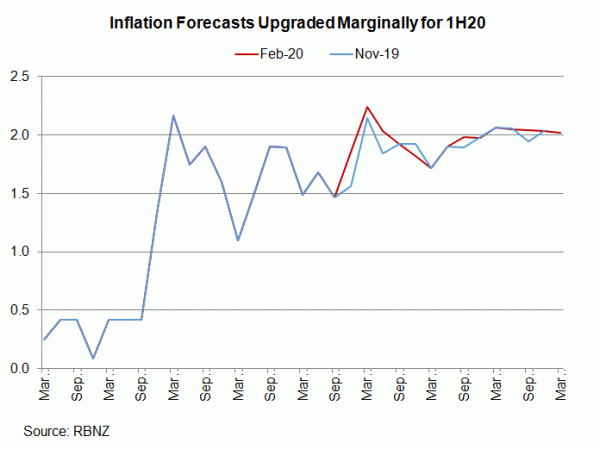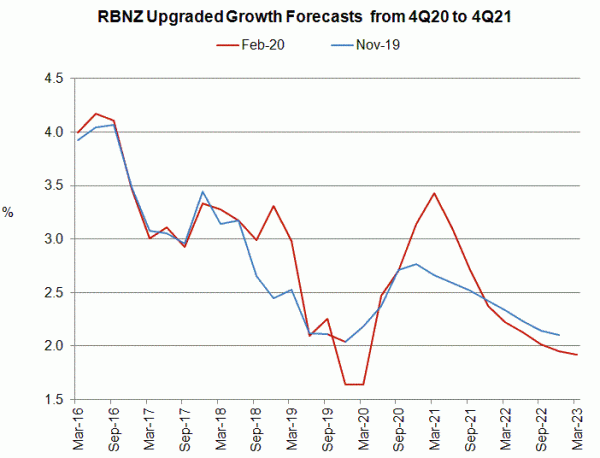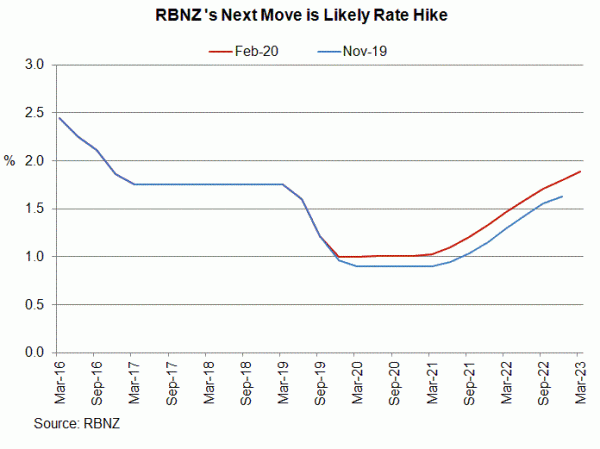RBNZ left the OCR unchanged at 1%. Yet, its message came in less dovish than expected. The members were upbeat about the employment situation and inflation. While coronavirus would affect domestic economy, the impact would be short-lived. Policymakers project GDP growth to accelerate in the second half of the year. While they believe low interest rates are needed to support the economy, the members do not expect further rate cut this year. Kiwi jumped after the announcement.
The central bank acknowledged improvement in the job market and inflation. As suggested in the accompanying statement, employment is “at or slightly above its maximum sustainable level”. Meanwhile, inflation is “close to the 2% mid-point” of the target range. It also noted that “low interest rates remain necessary to keep employment and inflation around target”. Policymakers are upbeat about the economic outlook, projecting growth to accelerate over 2H20. This would be driven by “monetary and fiscal stimulus, and the high terms of trade”. The members have upgraded the outlook for government investment and forecast improvement in household spending growth will increase. Yet, they added that growth momentum would remain soft early in the year.
While indicating that downside risks to growth in increased by the outbreak of the coronavirus, RBNZ suggested that the impact would be of “short duration” and confined in 1H20. The members would adjust the monetary policy accordingly.
RBNZ left the OCR unchanged at 1% in February. It is likely that the policy rate will stay steady for the rest of the year. Meanwhile, the central bank’s projections show that the current rate cut cycle has probably ended. The next move should possibly be a hike, which could come in late 2021 the earliest.
















